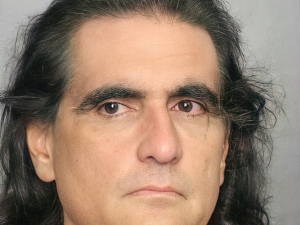Ash covered much of the Caribbean island of Saint Vincent on Saturday, and the stench of sulphur filled the air after a series of eruptions from a volcano that had been quiet for decades.
The whitish powder caked roads, homes and buildings after the powerful blasts from the volcano called La Soufriere that began Friday and continued into the night.
“Saturday morning on the island of over 110,000 residents looked like a winter wonderland, albeit blanketed by ash,” the news portal news784.com said.
Also read | Earthquake in Indonesia kills six, says disaster agency
Visibility in some areas was extremely limited, while in the capital city Kingstown on the south of the island — the volcano is in the north — the ash caused a thin haze of dust, the portal said.
“Vincentians are waking up to extremely heavy ash fall and strong sulphur smells which have now advanced to the capital,” the local emergency management agency tweeted.
The eruptions prompted thousands of people to flee for safety. Around 16,000 people live in areas that are now under evacuation orders.
Prime Minister Ralph Gonsalves said Saturday that water has been cut off in most areas and the country’s air space is closed because of the ash. Around 3,000 people spent the night in shelters.
Also read | Norwegian Prime Minister penalised for violating COVID-19 protocols
“It’s a huge operation that is facing us,” Gonsalves told NBC News.
He said his government has been in contact with other countries that want to provide aid. Guyana and Venezuela are sending ships with supplies, Gonsalves said.
The initial blast from La Soufriere, the highest peak in Saint Vincent and the Grenadines, sent plumes of hot ash and smoke 6,000 meters (20,000 feet) into the air Friday morning.
A second, smaller eruption took place Friday afternoon, belching out a 4,000-meter-high ash cloud, the University of the West Indies Seismic Research Centre said.
The 1,235-meter La Soufriere — the name is French for “sulphur mine” — had not erupted since 1979, and its largest blow-up happened over a century ago, killing more than 1,000 people in 1902.
It had been rumbling for months before it finally blew.
Zen Punnett, who lives on the 30-kilometer-long island, said people panicked Thursday night as the evacuation orders came out, but things were calmer Friday.
“I can feel and hear rumbling here in the green safe zone. We can see a huge ball of smoke. Keeping calm as much as possible and praying,” Punnett said Friday.
As of early Friday afternoon, most of the people in the red zone had been moved to safety, the Caribbean Disaster Emergency Management Agency said.
Royal Caribbean International and Celebrity Cruises said they were sending two ships to assist the evacuation effort.
Gonsalves said Friday that more ships from cruise liner company Carnival were also on their way.
Those evacuated would be taken to shelters elsewhere in the island chain or other Caribbean territories that have offered assistance, such as Barbados and Saint Lucia, according to local media.
Philmore Mullin, director of Antigua and Barbuda’s National Office of Disaster Services, told AFP the twin island nation was ready to receive evacuees from Saint Vincent.
“I know for sure they will be scared out of their wits. The question is, what will happen after they move? Volcanoes don’t tell you what they are thinking,” said Mullin.
“If it continues to erupt for a long time, it will be life-changing for them. And, depending on the type of eruption, they might not be able to get back home for years.”
str-dw/bbk






